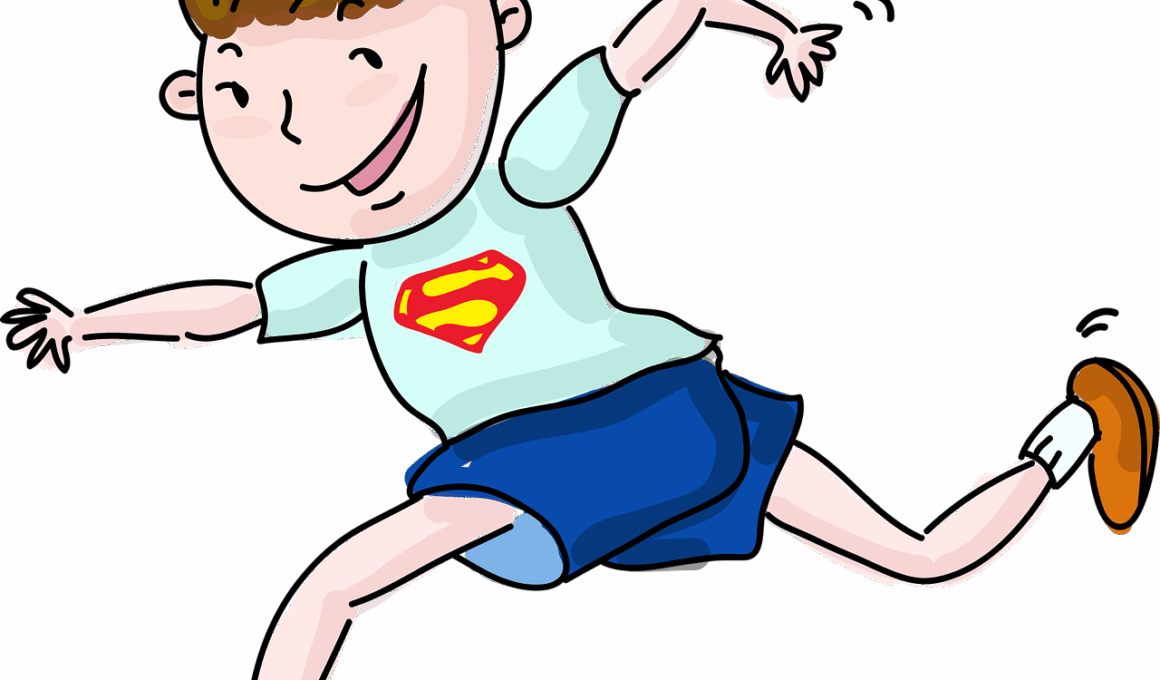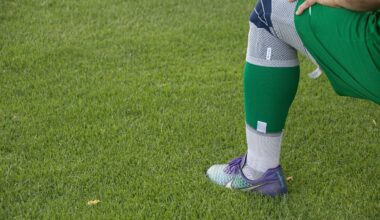Timeline Expectations: How Long Does Running Injury Rehab Take?
Understanding the timeline for running injury rehabilitation is crucial for any athlete. It’s common for runners to face injuries, and the recovery process can vary significantly from one person to another. Generally, minor injuries may require only a few weeks of rehabilitation, while more severe injuries can stretch to several months. Factors influencing recovery times include the type of injury, the individual’s overall health, and their adherence to rehabilitation protocols. A well-structured rehab program tailored to the specific needs of the injury can speed up recovery. Maintaining patience and dedication throughout the process is essential to achieving the desired results without rushing back too soon. Learning about the different stages of rehab can better prepare you for what to expect. Regular consultations with a physical therapist can provide valuable guidance, helping to monitor progress and make adjustments as needed. Listening to your body and not pushing over the pain threshold can make a significant difference in the overall rehabilitation timeline. Having realistic expectations regarding rehab can also help athletes maintain their motivation during the recovery process.
Common Running Injuries and Their Recovery Times
Injuries can significantly impact a runner’s training schedule, making it essential to categorize them effectively. Common injuries such as shin splints, tendinitis, and stress fractures exhibit different recovery times. For shin splints, the usual rehab time ranges from 2 to 6 weeks, primarily depending on rest and proper treatment. Tendinitis, particularly in the Achilles or patellar region, often takes 4 to 8 weeks to heal, contingent on therapeutic intervention and activity modification. A stress fracture usually requires a more prolonged rehabilitation period, taking anywhere from 6 to 12 weeks, involving a gradual return to running post-recovery. Understanding or having a general timeline based on the type of injury can help you stay focused. Ensure to follow your healthcare provider’s advice regarding physical activities during recovery. Maintaining mobility and conditioning in non-injured areas can also enhance recovery. Runners often benefit from cross-training during their rehab period. Activities that minimize impact allow continued fitness levels while the injured area recovers effectively, making the overall transition back to running smoother.
Emotional aspects also play a role when setting timelines for recovery. Many athletes experience frustration, anxiety, and even depression during their rehabilitation journey. This mental challenge can be as taxing as the physical recovery itself. Therefore, integrating mental preparation and support into the rehab process is essential. Consider working with a sports psychologist specializing in injury recovery. Developing coping mechanisms, such as visualization techniques and mindfulness meditation, can help maintain a positive outlook. Additionally, keeping a rehab log offers a tangible way to track progress, fueling motivation. Surround yourself with a support network of fellow runners and friends who understand the challenges you face during this time. They can provide encouragement and share strategies that worked for them. Attending group rehab sessions can bring camaraderie, reminding you that you’re not alone. Setting small, achievable goals during rehab can keep you motivated. Celebrating these milestones along the way can help foster a sense of accomplishment. Ultimately, remaining patient and upbeat during the process is vital, as the reward will be returning to the sport you love.
Key Components of a Rehabilitation Program
When undergoing running injury rehabilitation, a well-defined program is essential for successful recovery. Various components contribute to an effective rehabilitation strategy. Initially, a thorough assessment of the injury will provide insight into the specific needs to tailor the rehab program. Subsequent phases consist of pain management, mobility training, strengthening exercises, and gradual reintroduction to running. Pain management might include modalities like ice, heat, or electrical stimulation, depending on the injury type. Mobility training emphasizes gentle stretching and range-of-motion exercises that promote joint elasticity while avoiding aggravation. Once mobility improves, progress to strengthening exercises focused on the injured area and the surrounding muscle groups. These exercises help restore balance and flexibility, reducing the risk of recurrence. Integrating sport-specific drills as you approach running again is also vital in rebuilding confidence. Finally, monitoring performance and adjusting the program to meet changing needs can ensure ongoing progress. Collaborating with professionals can optimize rehabilitation by providing accountability. Tuning into your body can also help you discover when to modify your recovery plan for optimal long-term results.
Returning to running after injury requires a gradual approach to reduce reinjury risk. Developing a structured return-to-run plan can ensure a smooth transition back to your regular routine. Start with a strategy that focuses on low-impact activities, progressively building intensity over time. For instance, begin with walking, gradually introducing jogging intervals as comfort and strength improve. It’s essential not to rush this process; monitoring your response to increased activity is critical. Pay attention to any signs of discomfort or pain, which may indicate that further recovery time is necessary. Consult with your physical therapist or coach to adjust your plan based on your body’s feedback. Keep in mind that everyone’s recovery timeline varies, so individualize your approach. Aim for a balanced return that includes easy runs, strength conditioning, and recovery days to prevent fatigue. Incorporating cross-training activities during this phase can keep endurance levels up while minimizing injury stress. Remaining patient and focused on the long-term goal of returning to full performance can be challenging, but it’s crucial for benefiting your overall health.
Factors That Influence Rehabilitation Duration
The length of running injury rehabilitation is affected by numerous factors, making it essential to understand these elements. One significant factor is the nature of the injury itself, as the severity, location and type will differ in their healing times. Affected muscles, tendons, and bones can all require varied rehabilitation approaches and durations. Another factor is age; younger individuals tend to recover faster than older athletes due to inherent biological differences. Additionally, a runner’s overall fitness level and prior injury history play crucial roles in determining rehab speed. Those who are fitter might heal faster due to better blood circulation and muscle conditioning. Psychological factors cannot be overlooked either—stress levels and the runner’s mental resilience contribute to physical recovery rates. Nutrition also plays a vital role in rehabilitation durations; a well-balanced diet can significantly speed up recovery. Adequate hydration and vital nutrients (like proteins and vitamins) support tissue repair. Commitment to the rehabilitation process is equally essential. Listen to professional guidance, maintain open communication with your therapist and make the necessary lifestyle adjustments to optimize recovery.
Injuries can be a significant setback for runners, invoking feelings of frustration and helplessness. However, understanding the rehabilitation process can empower you as an athlete. Knowledge about timelines, injury types, and effective rehab strategies can provide a clearer context for your journey. Building a supportive environment through friends, family, and fellow athletes is also crucial to maintaining a positive outlook during the challenging times of recovery. Emphasizing mental strategies like visualization, goal-setting, and mindfulness can provide focus and motivation. Taking the time to outline clear and achievable objectives will nurture excitement toward recovery milestones. By utilizing modern technology (such as apps that track progress or connect with coaches) can enhance your rehabilitation experience. Staying informed through research and best practices in rehabilitative training can help you make smarter adjustment choices. As you embrace the rehabilitation journey, remember that patience is key and the process ultimately aims to return you to the sport you love stronger than before. Contacting experts for personalized guidance can greatly optimize your recovery. Ultimately, restoring confidence in your body will propel you toward more extended longevity in your running endeavors.


